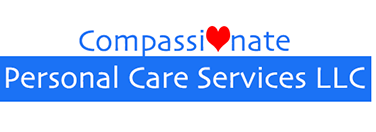The Impact of Technology on Personal Care: Innovations and Best Practices
In recent years, technology has transformed virtually every aspect of our lives, and personal care is no exception. From advanced medical devices to digital communication tools, technology is reshaping how personal care is delivered, making it more efficient, effective, and personalized. For personal care workers, embracing these technological advancements can enhance the quality of care provided and streamline daily tasks. Here’s a look at some of the most impactful technological innovations in personal care and best practices for integrating them into your work.
1. Telehealth and Remote Monitoring
Innovations:
Telehealth has revolutionized access to healthcare services, allowing patients to consult with healthcare providers remotely through video calls, phone calls, or online messaging. Remote monitoring technologies, such as wearable devices, can track vital signs, activity levels, and other health metrics in real-time, sending data to healthcare professionals.
Best Practices:
– Familiarize Yourself with Platforms: Understand how to use telehealth platforms and remote monitoring tools effectively. Ensure you can assist clients with setting up and using these technologies.
– Ensure Privacy: Maintain confidentiality and data security when using telehealth services. Adhere to privacy regulations and best practices to protect patient information.
2. Electronic Health Records (EHRs)
Innovations:
EHRs have replaced traditional paper records with digital versions, allowing for more efficient management of patient information. They provide a comprehensive view of a patient’s medical history, treatment plans, and progress.
Best Practices:
– Stay Organized: Ensure all patient information is accurately entered and updated in the EHR system. Regularly review and verify data for accuracy.
– Train and Adapt: Participate in training sessions to stay up-to-date with EHR systems and their features. Adapt to updates and changes in the software.
3. Assistive Technologies
Innovations:
Assistive technologies, such as smart home devices, mobility aids, and communication tools, enhance the independence and quality of life for individuals with disabilities or chronic conditions. Examples include voice-activated assistants, automated medication dispensers, and advanced prosthetics.
Best Practices:
– Personalize Solutions: Work with clients to select and customize assistive technologies that best meet their needs and preferences.
– Provide Support and Training: Educate clients and their families on how to use assistive technologies effectively. Offer ongoing support to address any issues or adjustments needed.
4. Artificial Intelligence (AI) and Machine Learning
Innovations:
AI and machine learning are being used to analyze health data, predict patient needs, and optimize care plans. For instance, AI-powered tools can help in diagnosing conditions, recommending treatments, and identifying patterns that may indicate health risks.
Best Practices:
– Integrate with Care Plans: Use AI insights to complement, not replace, human judgment. Integrate AI recommendations with personalized care plans and assessments.
– Stay Informed: Keep up with advancements in AI and machine learning technologies to understand their applications and limitations in personal care.
5. Mobile Health (mHealth) Apps
Innovations:
mHealth apps offer various functions, from tracking fitness and nutrition to managing chronic conditions and medication schedules. These apps empower clients to take an active role in their health management.
Best Practices:
– Recommend Reliable Apps: Suggest reputable and user-friendly mHealth apps to clients. Ensure they are compatible with their needs and provide accurate information.
– Monitor and Support: Help clients navigate and use mHealth apps effectively. Monitor their usage and provide support if they encounter difficulties.
6. Robotic Assistance
Innovations:
Robotic assistance includes robots designed to aid with physical tasks, such as lifting and transferring patients, as well as social robots that provide companionship and mental stimulation.
Best Practices:
– Assess Needs and Safety: Evaluate clients’ needs and ensure that robotic assistance is safe and appropriate for their specific situation.
– Combine with Human Care: Use robots to supplement, not replace, human interaction. Maintain a balance between technological and personal care to ensure holistic support.
7. Smart Home Technology
Innovations:
Smart home technology includes devices like automated lighting, smart thermostats, and security systems that can be controlled remotely. These technologies enhance safety, convenience, and comfort for clients living independently.
Best Practices:
– Customize and Install: Customize smart home technology to fit the client’s lifestyle and preferences. Ensure proper installation and functionality.
– Educate Clients: Provide training to clients and their families on how to use smart home technology effectively. Address any concerns or questions they may have.
8. Virtual Reality (VR) and Augmented Reality (AR)
Innovations:
VR and AR technologies are being explored for therapeutic and recreational purposes, such as cognitive stimulation, pain management, and enhancing quality of life through immersive experiences.
Best Practices:
– Tailor Experiences: Use VR and AR applications tailored to the client’s interests and therapeutic needs. Ensure that the technology is user-friendly and accessible.
– Monitor Reactions: Observe how clients respond to VR and AR experiences and adjust the use of technology based on their feedback and comfort level.
Technology is revolutionizing personal care, offering innovative solutions that enhance the quality, efficiency, and personalization of care. By staying informed about the latest technological advancements and integrating them thoughtfully into your practice, you can provide more effective and compassionate care. Embrace these innovations while maintaining a human touch, ensuring that technology complements rather than replaces the essential personal connection in care. Balancing technological tools with empathy and personalized attention will lead to the best outcomes for those you serve.
Recommended Posts




